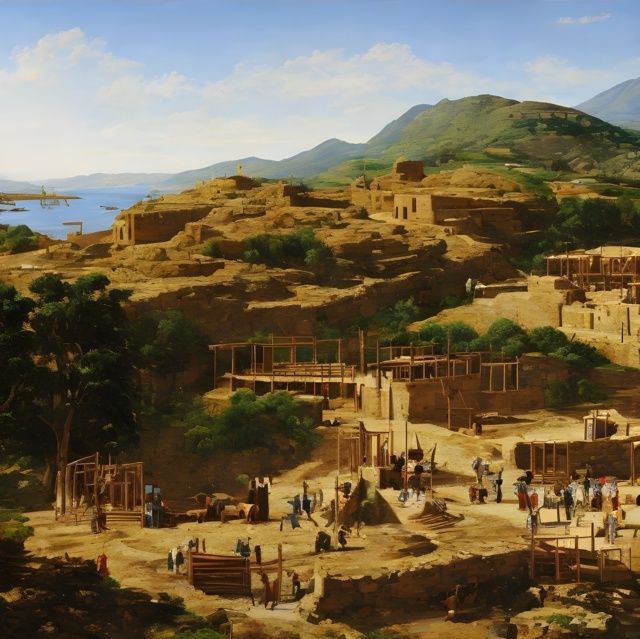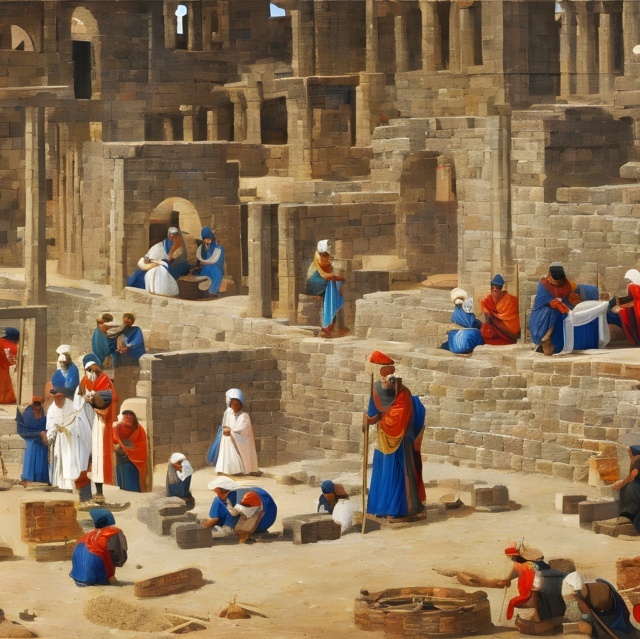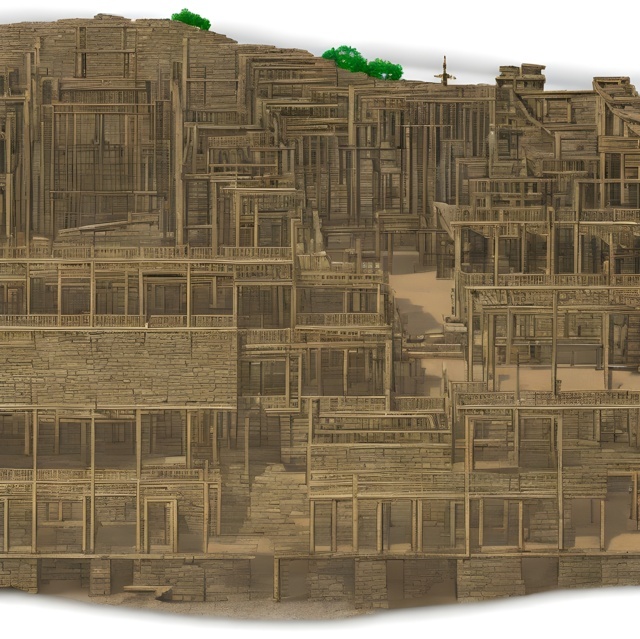Chaco Canyon, located in present-day New Mexico, was once the political and cultural centre of the ancestral Puebloan people. Among the many architectural wonders of Chaco Canyon is Chetro Ketl, one of the largest and most complex great houses, built in the 9th and 10th century. In this blog post, we will explore the construction, significance, and challenges of building Chetro Ketl.
Construction of Chetro Ketl
The construction of Chetro Ketl began in the early 9th century, during a time of rapid social and economic change in Chaco Canyon. The Puebloan people were transitioning from a hunting and gathering lifestyle to one based on agriculture and settled communities. The construction of monumental architecture was part of this transformation.
Chetro Ketl, meaning “Big House” in Navajo, covers an area of over three acres and contains more than 400 rooms. The great house is built using a combination of mud mortar, sandstone blocks, and wooden beams, all sourced from the surrounding area. The construction of Chetro Ketl required an enormous amount of labour, organization, and resources, reflecting the social and economic complexity of the Chacoan society.
The construction of Chetro Ketl was a multi-generational project that required the participation of many individuals and communities. The work was likely organized by a hierarchical social structure, with leaders overseeing the work of labourers, craftsmen, and other specialized workers. The construction of Chetro Ketl was likely a communal effort, with individuals and communities contributing labour and resources based on their social status and obligations.
Significance of Chetro Ketl
Chetro Ketl was not built in isolation but was part of a larger network of great houses, roads, and other architectural features that connected Chaco Canyon to other regions of the Southwest. The construction of these features required the movement of goods and people across long distances, indicating the existence of a complex trade and exchange network that linked different communities and regions.
The construction of Chetro Ketl was not just a utilitarian project but also had symbolic and ritual significance. The great house was likely used for a variety of societal and religious purposes, including ceremonial events, storage of food, and as a residence for elite members of society. The construction of Chetro Ketl would have reinforced the social and political power of those who oversaw its construction and use.
Challenges of Building Chetro Ketl
Despite its grandeur and complexity, the construction of Chetro Ketl was not without challenges and setbacks. The use of local sandstone, which is relatively soft and prone to erosion, meant that the great house has required ongoing maintenance and repair over the centuries. The construction of Chetro Ketl also occurred during a period of climatic instability, with droughts and other environmental factors affecting agricultural production and resource availability.
Conclusion
In conclusion, the construction of Chetro Ketl was a monumental undertaking that reflects the social, economic, and religious complexities of the Chacoan society. The great house was built over generations, using local resources and communal labour, and was part of a larger network of architecture and trade that connected the region to other parts of the Southwest. The construction of Chetro Ketl was not just a utilitarian project but also had symbolic and ritual significance, reinforcing the power and status of those who oversaw its construction and use.
References
– Lekson, S. H. (1999). The Chaco Meridian: Centers of Political Power in the Ancient Southwest. Rowman Altamira.
– Lippert, D., & Vivian, R. G. (1998). Chaco’s Northern Prodigies: Salmon, Aztec, and the Ascendancy of the Middle San Juan Region After AD 1100. University of Utah Press.
– Mills, B. J. (2003). Architecture, Power, and Ritual in the Ancient Andes: The Architecture of Chavín de Huantar. Cambridge University Press.
– Plog, S. (1997). Ancient Peoples of the American Southwest. Thames and Hudson.
– Wilcox, D. (2012). Chetro Ketl: The Great Houses of Chaco Canyon. University of New Mexico Press.
Tags
Divi Meetup 2019, San Francisco
Related Articles
Unappreciated Greatness
Life and Legacy of Jahangir of the Mughal Empire. Jahangir ruled over one of the largest empires in human history during his lifetime, yet few people outside of South Asia have heard of him. I aim to shed light on the life and legacy of this remarkable figure,...
The Plague Doctor’s Diary
A Personal Account of the Turin Epidemic of 1656. I am writing this diary to record my experiences and observations as a plague doctor in Turin, the capital of the Duchy of Savoy, during the terrible epidemic that has afflicted this city and its surroundings since the...
The Timeless Beauty of Bustan
Unveiling the Secrets of Saadi Shirazi's Masterpiece.In the realm of Persian literature, few works have captured the essence of love, spirituality, and morality quite like Bustan (The Orchard) by Saadi Shirazi. This 13th-century masterpiece has left a lasting impact...
Stay Up to Date With The Latest News & Updates
Explore
Browse your topics of interest using our keyword list.
Join Our Newsletter
Sign-up to get an overview of our recent articles handpicked by our editors.
Follow Us
Follow our social media accounts to get instant notifications about our newly published articles.









